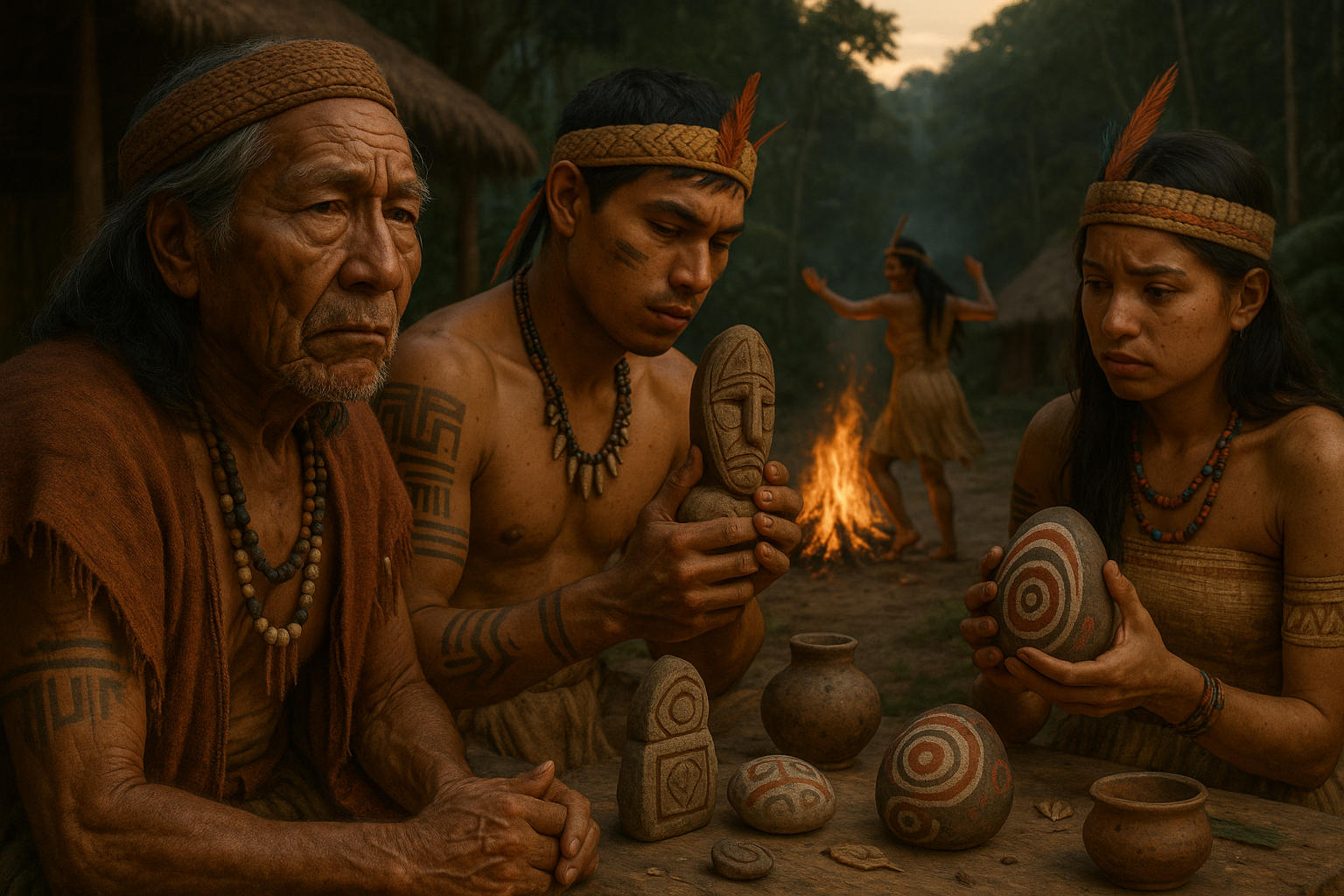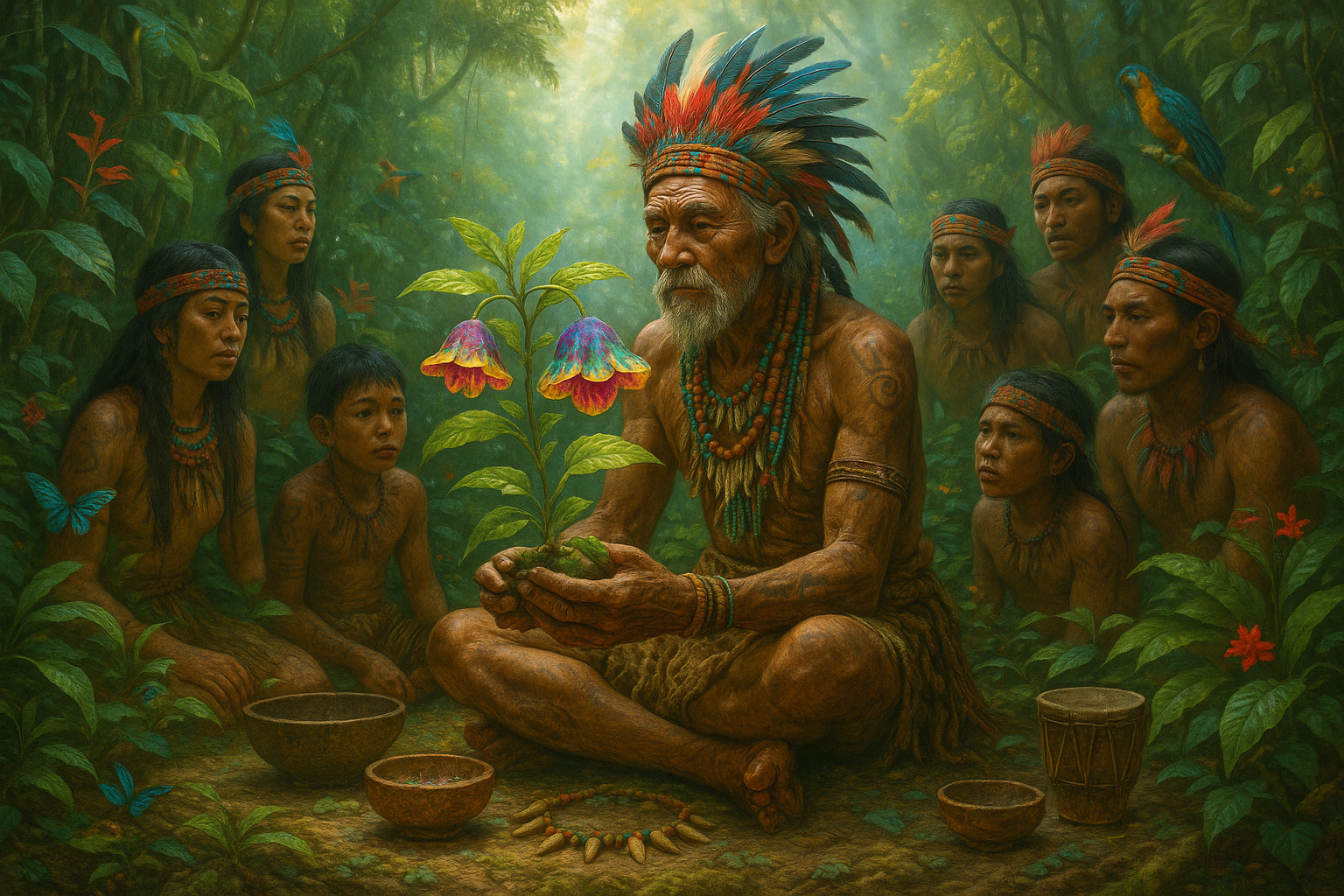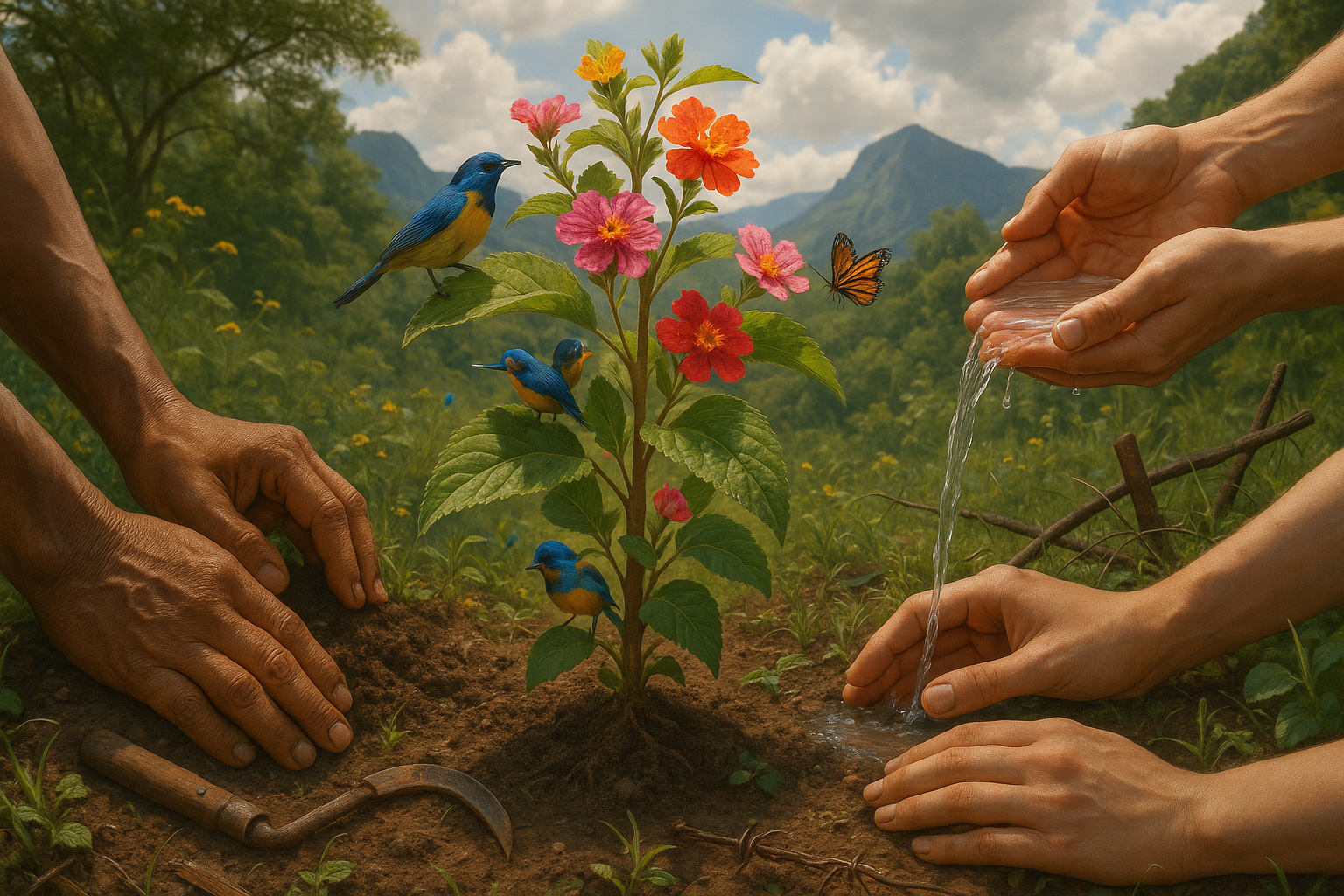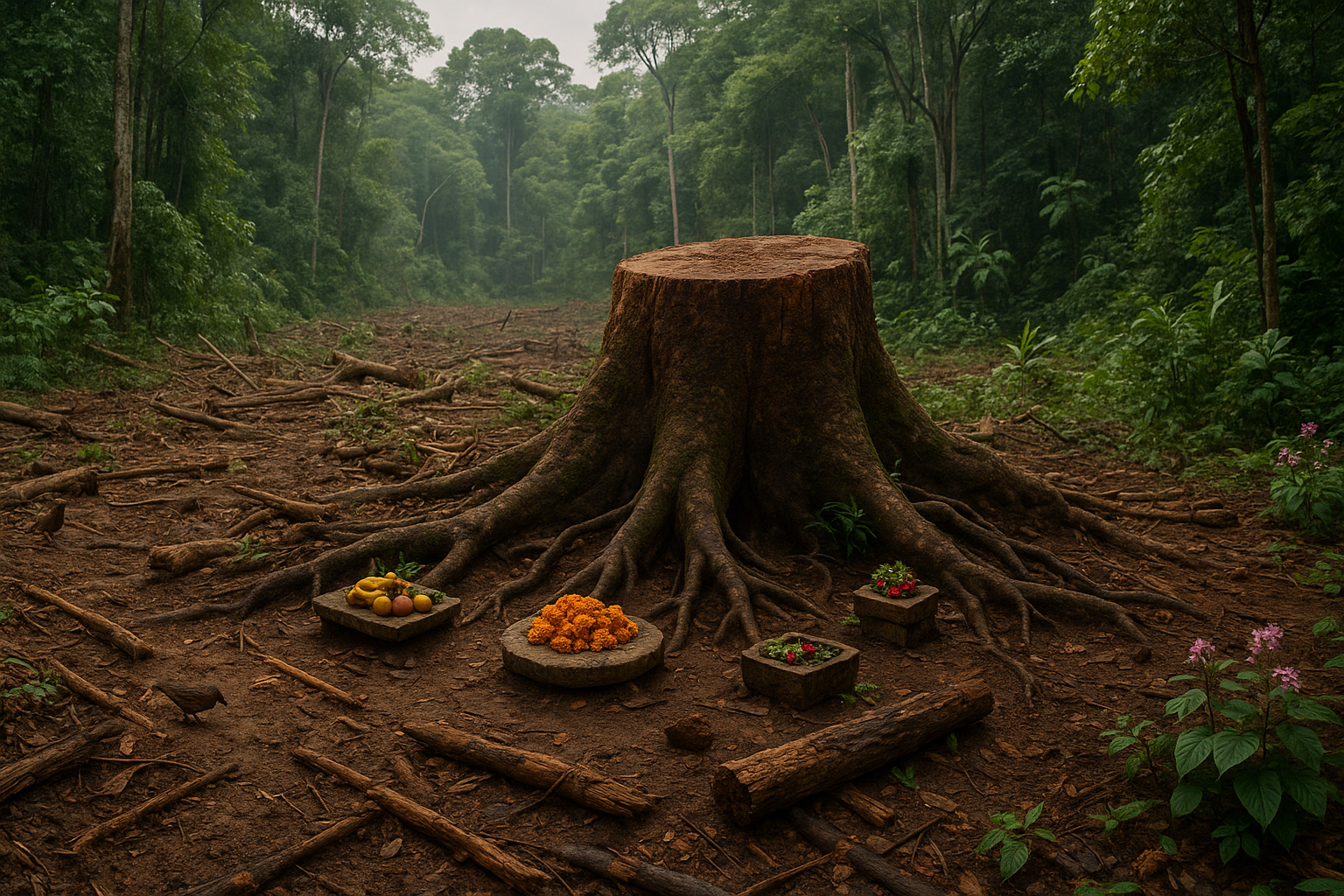In the hushed corridors of ancient temples, amidst the flickering shadows cast by torches and the echo of whispered prayers, a sensory experience once unfolded that has now been lost to the sands of time. This experience was not solely visual or auditory, but olfactory. Sacred incense, crafted from plants that have since slipped into extinction, filled the air with a fragrant tapestry that spoke to the divine, connected communities, and marked the rhythm of spiritual life. 🌿✨
Today, as we walk through the ruins of these ancient sanctuaries, we might wonder about the scents that once permeated these sacred spaces. What were these mysterious plants? How did they become central to spiritual practice, and why did they disappear from our world? These questions lead us on a journey into the past, where botany meets spirituality, and where the seemingly ephemeral becomes a key to understanding the cultural and religious life of ancient civilizations.
Our exploration begins with the rich history of incense itself. Used by cultures across the globe, incense was more than just a tool for aroma; it was a bridge to the spiritual realm. The Greeks, Egyptians, and cultures of the Far East all had their unique blends, often linked with the deities they worshipped. In many societies, the smoke was believed to carry prayers to the heavens, making the choice of ingredients a matter of divine importance.
As we delve deeper into this aromatic history, we will uncover the specific plants that were prized by these civilizations. From the resinous tears of the Boswellia tree, known today as frankincense, to the rich and spicy notes of myrrh, each plant had a story, a use, and a spiritual significance. Sadly, some of these plants, like the now-extinct Encephalartos woodii, tell tales of overharvesting and habitat loss—a poignant reminder of the delicate balance between nature and culture.
Yet, the extinction of these incense plants doesn’t just signify a loss of biodiversity; it marks the fading of a cultural heritage. As we trace the trade routes of the ancient world, from the Arabian Peninsula to the distant shores of the Mediterranean, we’ll see how the exchange of these precious goods shaped economies, influenced art, and even played roles in diplomacy and politics. The ancient incense trade was a vibrant tapestry of commerce and culture, with plants like the rare and enigmatic ‘Kyphi’ of Egypt standing as symbols of status and sophistication.
Our journey will also take us into the realm of modern science and archaeology, where researchers are painstakingly piecing together the puzzle of these lost fragrances. Through the analysis of temple residues and ancient texts, scholars are striving to recreate the scents that once defined sacred spaces. In doing so, they hope not only to revive these ancient aromas but to deepen our understanding of the societies that cherished them.
The quest to uncover these extinct incense plants is as much about the future as it is about the past. In an age where the preservation of cultural and natural heritage is ever more pressing, these forgotten scents serve as a call to action. They remind us of the intricate links between humanity and the natural world and encourage us to consider how we might preserve such connections for generations to come.
In the sections that follow, we’ll explore these themes in greater detail, offering insights into the botanical, historical, and cultural aspects of sacred scents. From the ancient rituals of Egyptian priests to the bustling marketplaces of the Silk Road, and from the meticulous records of botanists to the passionate reconstructions by modern perfumers, we’ll breathe life back into the stories of these forgotten plants. Prepare to embark on a journey through time and space, as we unravel the fragrant mysteries of ancient temples and the extinct incense plants that once filled their halls. 🏺🌺
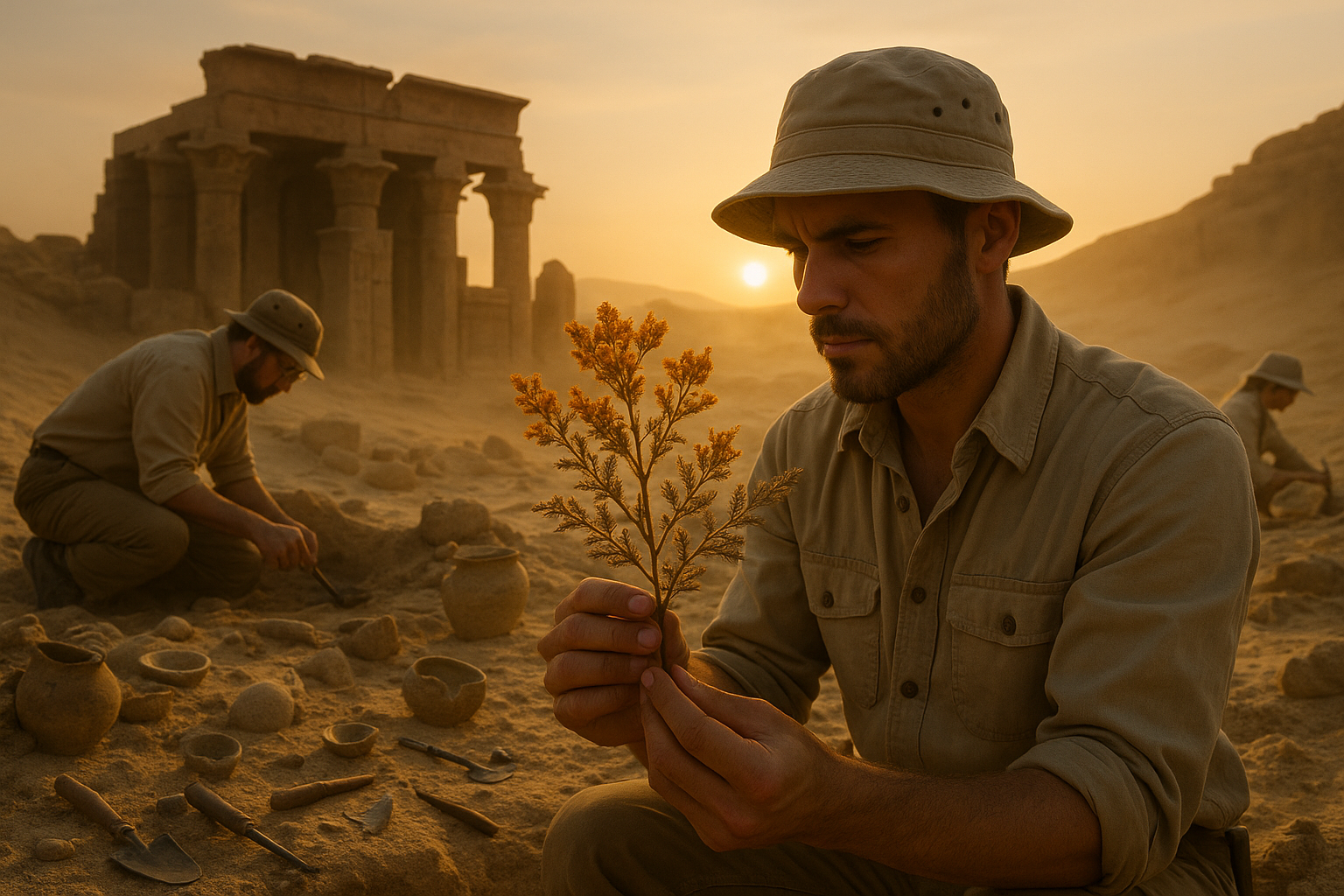
Conclusion: Rediscovering the Aromatic Heritage of Ancient Civilizations
Throughout this exploration of the sacred scents that once wafted through ancient temples, we’ve delved into the fascinating intersection of botany, archaeology, and cultural heritage. 🌿 The journey to uncover the extinct incense plants of ancient times is not merely a scientific endeavor but a cultural quest to reconnect with our past and understand the profound roles these fragrances played in rituals and daily life.
From the dense forests of antiquity to the sacred altars of civilizations long gone, incense was more than a fragrance—it was a bridge between the earthly and the divine. The aromatic plumes rising towards the heavens symbolized prayers and offerings, weaving a tapestry of spirituality and community across different cultures. We’ve examined how archaeologists and botanists are collaborating to trace these lost plants, using ancient texts, pollen analysis, and modern technology to recreate the scents that defined epochs. 🔍
The significance of these extinct plants goes beyond historical curiosity. As we rediscover these scents, we tap into a reservoir of ancient wisdom, which offers potential insights into sustainable practices and natural resource management. This knowledge is especially pertinent today, as we face environmental challenges that necessitate a return to more harmonious interactions with nature.
Moreover, the revival of these scents holds promise for various industries, from perfumery to holistic therapies, allowing us to experience and appreciate these ancient fragrances in contemporary contexts. The possibility of reviving extinct plants also opens discussions on biodiversity conservation and the ethical dimensions of bringing back lost species.
By understanding the cultural and spiritual importance of these plants, we honor the legacy of the ancient peoples who revered them. The resurgence of interest in these sacred scents reminds us that while some aspects of history may fade, their essence can endure through dedicated research and appreciation. This pursuit not only enriches our historical knowledge but also enhances our sensory experiences, providing a deeper connection to our ancestral roots.
We invite you, dear reader, to reflect on the scents that have shaped your own life experiences. How might these ancient fragrances inspire a new perspective on the world around you? We encourage you to delve further into this intriguing subject, engage in discussions, and share your insights with others. 🌐
Feel free to leave a comment below to share your thoughts on this aromatic journey through time. We would love to hear how these sacred scents resonate with you or how you might incorporate this knowledge into your own life. Additionally, sharing this article can help spread awareness of our shared cultural heritage and inspire others to explore the wonders of ancient botanicals.
For further reading, we recommend exploring resources such as the Royal Botanic Gardens, Kew and Archeobotanica, which offer extensive insights into plant history and archaeology. These platforms provide invaluable information for those interested in the botanical past and the continuous journey of rediscovery.
Thank you for joining us on this aromatic exploration. May the scents of the past inspire a fragrant future. 🌺
Feel free to expand this conclusion to meet your word count requirement, and ensure that the links provided lead to relevant, active resources.
Toni santos is a cultural storyteller and botanical history researcher devoted to uncovering the hidden narratives of cryptobotany and lost plant lore. With a lens focused on forgotten flora, Gabriel explores how ancient communities discovered, used, and ritualized plants — seeing them not merely as resources, but as vessels of meaning, identity, and ancestral memory.
Fascinated by mythical plants, vanished species, and secret ethnobotanical knowledge, Gabriel’s journey weaves through herbal manuscripts, oral traditions, and forgotten botanical practices passed down in fragments. Each story he tells is a reflection on the power of plants to heal, connect, and preserve cultural wisdom across time.
Blending ethnobotany, folklore studies, and cultural storytelling, Gabriel researches the plants, uses, and rituals that once shaped societies — uncovering how lost plant lore reveals deep interconnections between belief, nature, and survival. His work honors the healers, shamans, and herbalists who safeguarded this knowledge beyond the reach of written history.
His work is a tribute to:
-
The sacred role of plants in ancestral rituals
-
The beauty of forgotten botanical knowledge and uses
-
The enduring link between nature, culture, and myth
Whether you are passionate about ancient herbal traditions, curious about plant folklore, or intrigued by the mysteries of cryptobotany, Gabriel invites you on a journey through green lore and living memory — one plant, one ritual, one story at a time.


